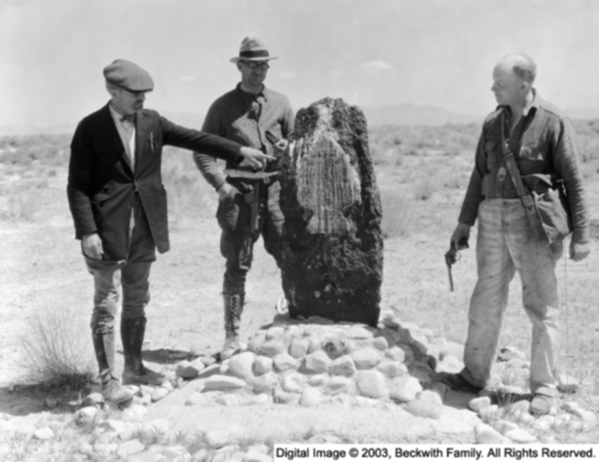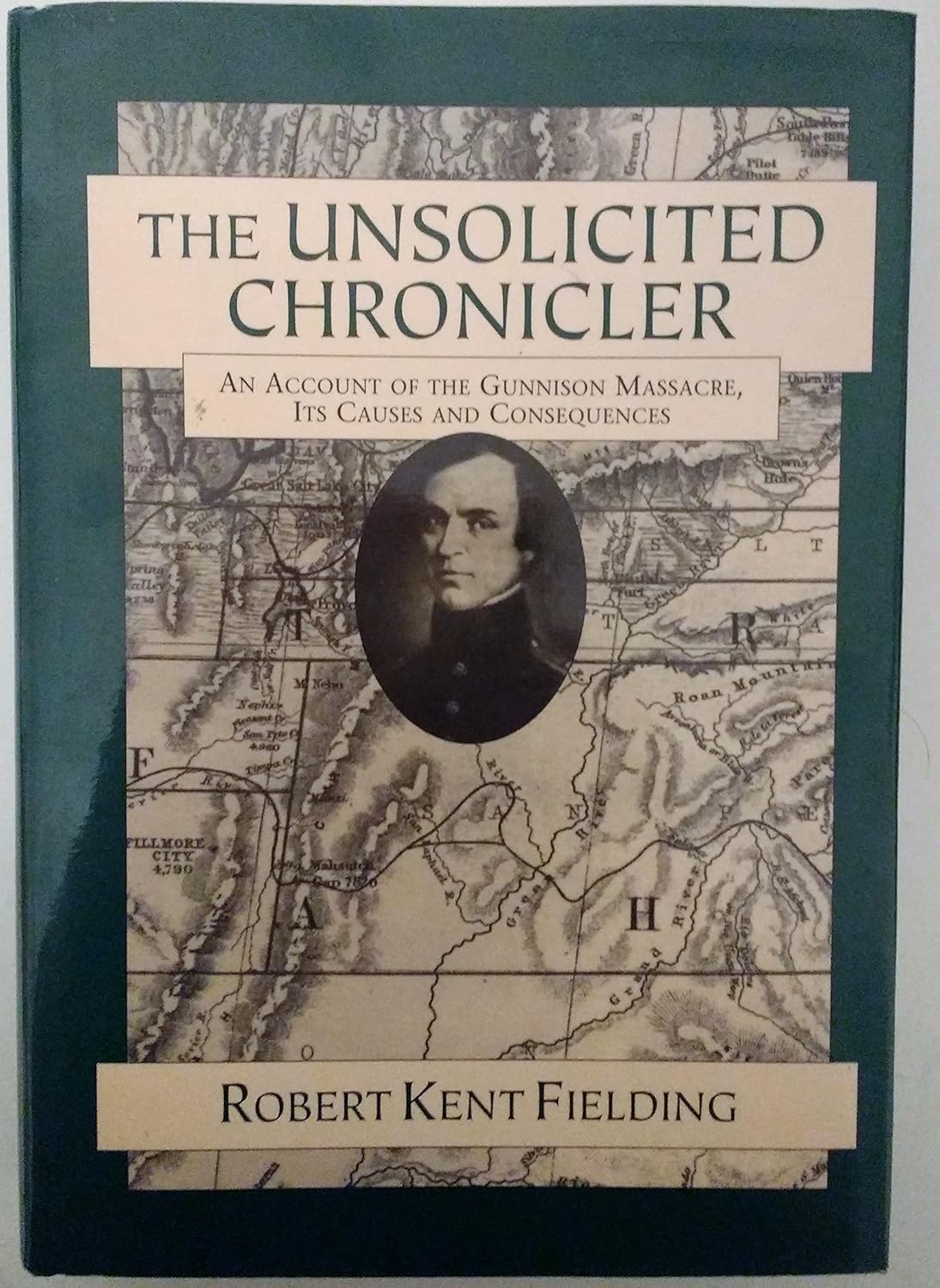
The Silent Sands of Gunnison: Unearthing a Forgotten Utah Massacre
In the rugged heart of central Utah, where the Sevier River winds its way through arid landscapes and the mountains stand as silent sentinels, lies a story etched not in stone, but in the collective memory of a people and largely forgotten by others. It is a narrative of land, survival, fear, and a brutal act of violence known as the Gunnison Massacre – an event that, while predating the more infamous Mountain Meadows Massacre by four years, casts a long, chilling shadow over the early history of Mormon settlement and its often-violent interactions with the indigenous inhabitants of the Great Basin.
The year is 1853. Brigham Young’s Latter-day Saints, having made their arduous journey to the Salt Lake Valley just six years prior, were rapidly expanding their settlements, establishing colonies in fertile valleys across what they called "Deseret." This ambitious colonization effort, driven by a fervent belief in their divine mandate to build Zion, inevitably brought them into increasing contact – and conflict – with the various Native American tribes who had called these lands home for millennia: the Ute, Shoshone, Goshute, and Paiute.
A Clash of Worlds: The Frontier Crucible

The encounter between these two vastly different cultures was fraught with tension from the outset. For the Paiute and Ute peoples, the arrival of the settlers meant the disruption of their traditional hunting grounds, the diversion of precious water resources, and the introduction of foreign diseases against which they had no immunity. Their nomadic or semi-nomadic existence, centered around seasonal migrations for hunting, fishing, and gathering, was incompatible with the settlers’ agricultural ambitions and their desire for permanent, fenced land.
From the perspective of the Latter-day Saint pioneers, life on the frontier was a constant struggle for survival. Isolated, often facing scarcity, and driven by a deep sense of religious purpose, they viewed the land as theirs to cultivate and "make blossom as the rose." While Brigham Young, in his public pronouncements, often advocated for peaceful relations with the "Lamanites" (as they referred to Native Americans, believing them to be descendants of a people from the Book of Mormon), urging his followers to "feed them rather than fight them," the reality on the ground was far more complex. Fear, prejudice, and the pressures of resource competition frequently led to escalating hostilities.
Cattle, a cornerstone of the pioneer economy, were a particular point of contention. Native Americans, whose traditional game sources were dwindling due to settler encroachment, often resorted to taking livestock, viewing it as a reclamation of what was rightfully theirs or a necessity for survival. The settlers, in turn, saw such acts as theft and a direct threat to their livelihood, demanding swift and often brutal retaliation.
The Spark of Retribution: October 1853
It was precisely this dynamic that set the stage for the Gunnison Massacre. In the autumn of 1853, tensions in the central Utah valleys were exceptionally high. A period of drought had exacerbated resource scarcity, and a series of skirmishes, collectively known as the Walker War (named after Ute Chief Walkara), had already claimed lives on both sides. Settlers in Manti, a small community in the Sanpete Valley, reported a recurring problem of cattle theft.
On October 26, 1853, a small party of Paiute Indians, likely driven by hunger, took some cattle from the Manti herd. The settlers, already on edge, saw this as the final straw. Captain Andrew Jackson Stewart, a prominent figure in the Manti community, quickly organized a militia of approximately 30 men, determined to retrieve the cattle and punish the alleged perpetrators. This was not a federal military operation, but a localized settler response, typical of frontier justice in the absence of established government authority.
The militia tracked the Paiute party south, along the Sevier River. What happened next is a stark illustration of the brutal realities of frontier warfare and the deep power imbalance between the two groups. The Paiute camp, consisting of men, women, and children, was discovered near a bend in the river, approximately 15 miles south of the present-day town of Gunnison.
The Ambush and Annihilation

Under the cloak of pre-dawn darkness, Stewart’s men surrounded the unsuspecting camp. As the first rays of light began to pierce the eastern sky, they launched their attack. There was no negotiation, no attempt at parley, only a sudden, overwhelming assault. The sleeping Paiute had little chance.
Historical accounts, largely from the settlers themselves, describe a swift and decisive engagement. The element of surprise was complete. While precise numbers vary due to the lack of official documentation and the one-sided nature of the accounts, it is generally accepted that at least a dozen Paiute individuals were killed, perhaps more. Critically, these casualties included women and children. The settlers’ reports often emphasized that "no prisoners were taken," a chilling phrase that underscores the intent to eliminate rather than capture or negotiate.
Historian Will Bagley, in his critical examination of Utah’s early history, notes the casual brutality of such encounters. The official reports back to Salt Lake City often downplayed the nature of these "skirmishes" or justified them as necessary acts of self-defense, even when women and children were among the dead. The Paiute, decimated and traumatized, could offer no counter-narrative to the official record. Their voices, if ever recorded, have been largely lost to history.
The Veil of Silence and Justification
In the immediate aftermath, the Gunnison Massacre, like many similar incidents across the American West, was quickly folded into the prevailing narrative of righteous pioneer defense against "hostile savages." The stolen cattle were recovered, and the settlers returned to Manti, their mission accomplished. There was no federal investigation, no charges filed, and no public outcry from within the Mormon community. The event was simply another grim chapter in the relentless expansion of the American frontier, where the lives of indigenous peoples were often deemed expendable in the face of perceived settler needs and fears.
This silence, this lack of accountability, is one of the most striking aspects of the Gunnison Massacre. Unlike the Mountain Meadows Massacre, which involved the slaughter of emigrants and drew national condemnation, the killing of Native Americans, particularly in response to perceived threats, was often considered an unfortunate but necessary part of "civilizing" the frontier. The prevailing racist attitudes of the era, which viewed Native Americans as inferior and obstacles to progress, contributed to this pervasive indifference.
A Forgotten Name, a Broader Context
It is important to clarify that the Gunnison Massacre, the subject of this article, refers to the slaughter of the Paiute camp by settlers. This event occurred just days before, and is entirely separate from, the killing of Captain John W. Gunnison and his survey party by a group of Ute Indians on October 26, 1853, further north along the Sevier River. The timing and proximity are coincidental, but the two events highlight the intense volatility of the region during this period. The settlers’ massacre of the Paiute camp was not in retaliation for Gunnison’s death, as news of that incident had not yet reached Manti. Rather, both tragedies were symptomatic of the deep-seated conflicts arising from land encroachment, cultural misunderstandings, and the violent struggle for survival on the Utah frontier.
The Long Shadow: Legacy and Remembrance
Today, the site of the Gunnison Massacre remains unmarked, an anonymous stretch of desert near the modern town that bears the name of the ill-fated surveyor, not the victims of the massacre. This lack of physical commemoration is emblematic of how much of Native American history, particularly the painful chapters of violence and displacement, has been erased or marginalized from the dominant historical narrative.
However, the memory of such events persists within the Native American communities, passed down through oral traditions. For the Paiute people, the Gunnison Massacre represents not just a historical incident, but a generational trauma, a stark reminder of the injustices and violence their ancestors endured.
In recent decades, there has been a growing movement, led by historians, archaeologists, and Native American advocates, to unearth these forgotten stories and integrate them into a more complete and honest understanding of American history. This involves not only acknowledging the suffering of the victims but also examining the motivations and actions of the perpetrators, and the broader societal forces that enabled such atrocities.
The Gunnison Massacre serves as a powerful reminder that the story of the American West is not simply one of heroic pioneers overcoming adversity. It is also a story of conquest, displacement, and violence against indigenous peoples, often justified by religious fervor, economic necessity, and racial prejudice. To truly understand the fabric of the nation, one must confront these uncomfortable truths, allowing the silent sands to finally speak, and giving voice to those who were silenced so long ago. Only then can genuine healing and reconciliation begin, fostering a more just and inclusive future built on the recognition of all histories, remembered and acknowledged.


